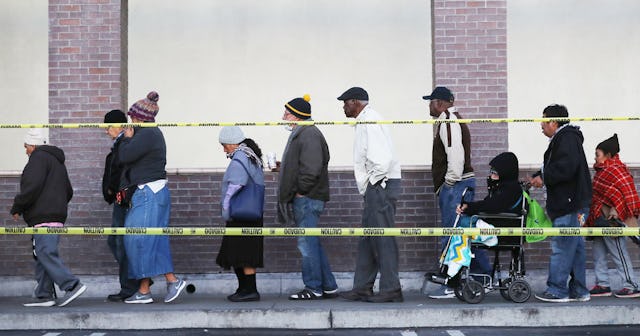Children With Disabilities And COVID-19: Don’t Forget About Us

With the outbreak of COVID-19, information is being rapidly disseminated from many sources. The information has been unclear and inconsistent at times causing stress and confusion. But for families who have children with disabilities, there are even more concerns and questions without answers.
In the fall of 2019, a new study showed the number of children with developmental disabilities had increased, and almost 14 million children in the United States have special health care needs according to the National Survey of Children’s Health. There are existing policies and programs for children with disabilities for special education, health care, disability services, and housing. Yet, there are few resources available for emergency preparedness except for some designed for people with disabilities of all ages.
Preparedness communication, policies and protocols often address people with disabilities as an afterthought despite the fact this population is highly vulnerable in a pandemic situation. Even in the news, we have seen multiple articles talking about what families should do about education and social distancing during this time, yet very few have even briefly mentioned recommendations for families who have children with disabilities.
Quarantine requirements can be harder to navigate, especially when children have complex medical needs, and little guidance is available for our families other than a few websites that have posted some ideas. In China, a 16-year-old boy with cerebral palsy died after his father and brother were placed in quarantine.
School closures can also lead to extra hardships for these families. If classes are delivered online, will they be accessible? Are school districts able to maintain services? Quarantine, school closings and social distancing may disrupt essential routines for children, many of whom do best with structure, thus affecting behavior and well-being. Explaining closures and schedule changes can be especially difficult.
John Moore/Getty
Public health officials suggest regular hand washing with proper techniques, and to avoid touching one’s face. However, children with disabilities may have sensory processing issues or motor skill challenges that make it difficult to engage in these and other practices. Are there alternative ideas? Recommendations such as having extra supplies are also important to communicate to families who have children with disabilities. But empty shelves where products such as hand sanitizer or rubbing alcohol should be should be mean that families who rely on these products are not able to access them. Families are unsure of where to turn to get necessary supplies.
Children with disabilities are often require frequent medical care. Getting care may be more challenging as a growing number of sick people places a bigger burden on the system. Children with complex medical needs may require regular doctor visits for critical treatments but may be told to stay home if sick, and non-verbal children may have a harder time communicating about symptoms they may have if exposed to COVID-19.
There is also no information about how to manage staff coming into the home. There is guidance for health care providers and schools, but what about respite or community habilitation staff, many of whom are hired directly by families? CDC COVID-19 guidance does not specifically address how families with home support staff should manage COVID-19 concerns. And as one article states, it is important to be “anticipating and arranging contingency plans for continuity of supports and services that may be disrupted by paid and unpaid caregivers’ being ill or otherwise unable to work.” Many families depend on people who come into the home to provide help and care for their child, but how is that managed with social distancing recommendations?
Clear communication and guidance for COVID-19 is needed for everyone, but we need to make an extra effort to guide families who have children with disabilities, especially those who are medically fragile. Of course, we must consider all people with disabilities. To be sure, many adults with disabilities also require additional guidance, assistance, and protection, especially those living in group settings where transmission can occur more quickly, and it is important to ensure that all COVID-19 communication is accessible so that everyone can benefit. However, children with disabilities have unique issues.
And finally, remember when you say “COVID-19 is only bad for older people and those with existing health issues,” a parent with a child at greater risk for complications hears you saying the life of their child is not important. Communicating about COVID-19 isn’t just about getting accurate and helpful information to people, it is also about using language that reinforces that everyone is important.
Information about COVID-19 is rapidly changing, and Scary Mommy is committed to providing the most recent data in our coverage. With news being updated so frequently, some of the information in this story may have changed after publication. For this reason, we are encouraging readers to use online resources from local public health departments, the Centers for Disease Control, and the World Health Organization to remain as informed as possible.
This article was originally published on